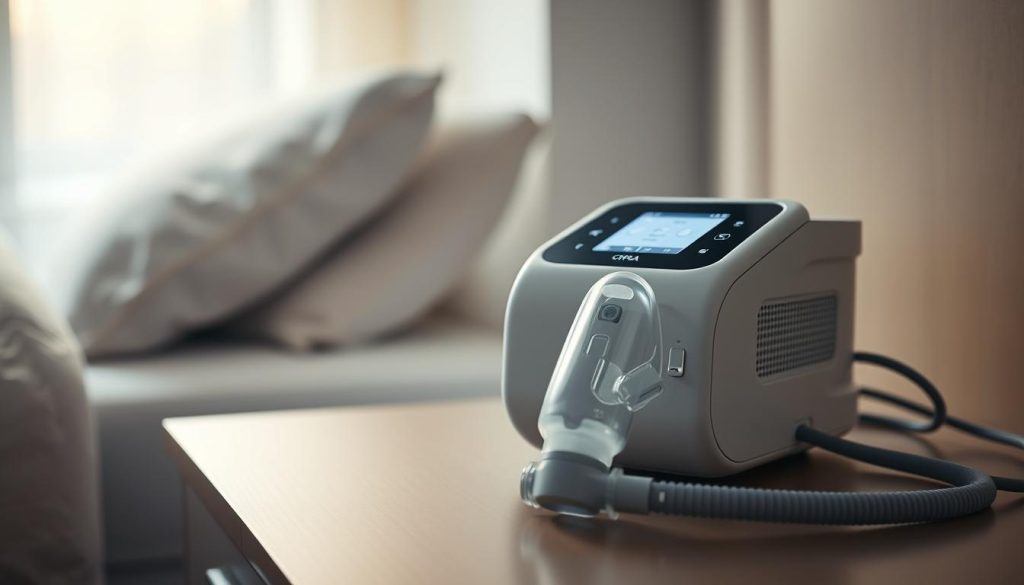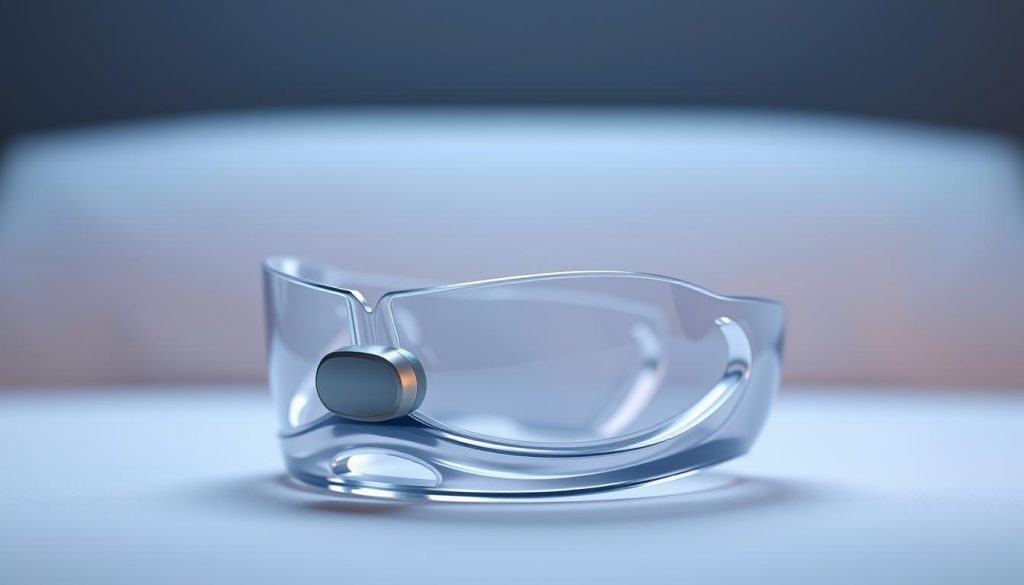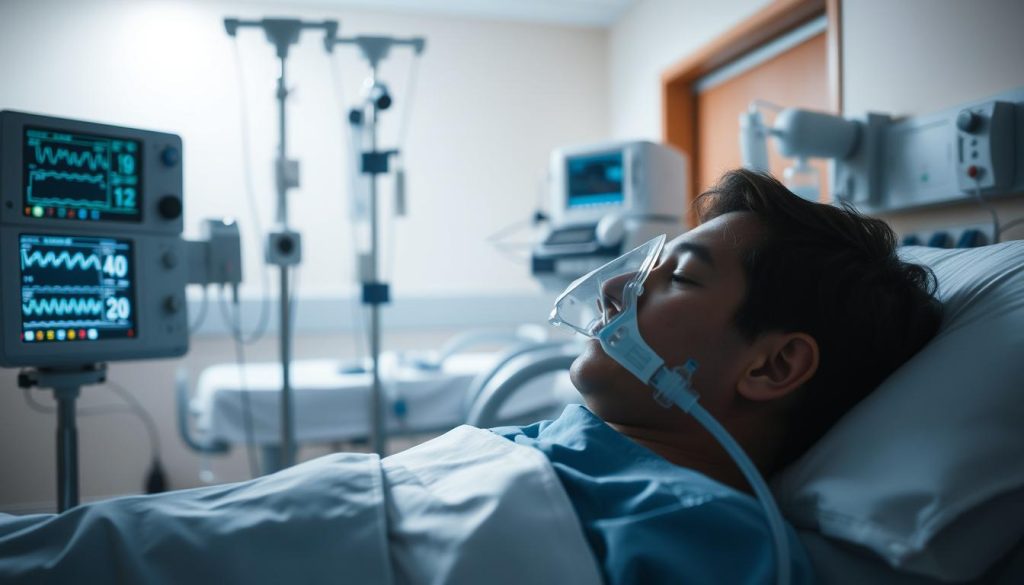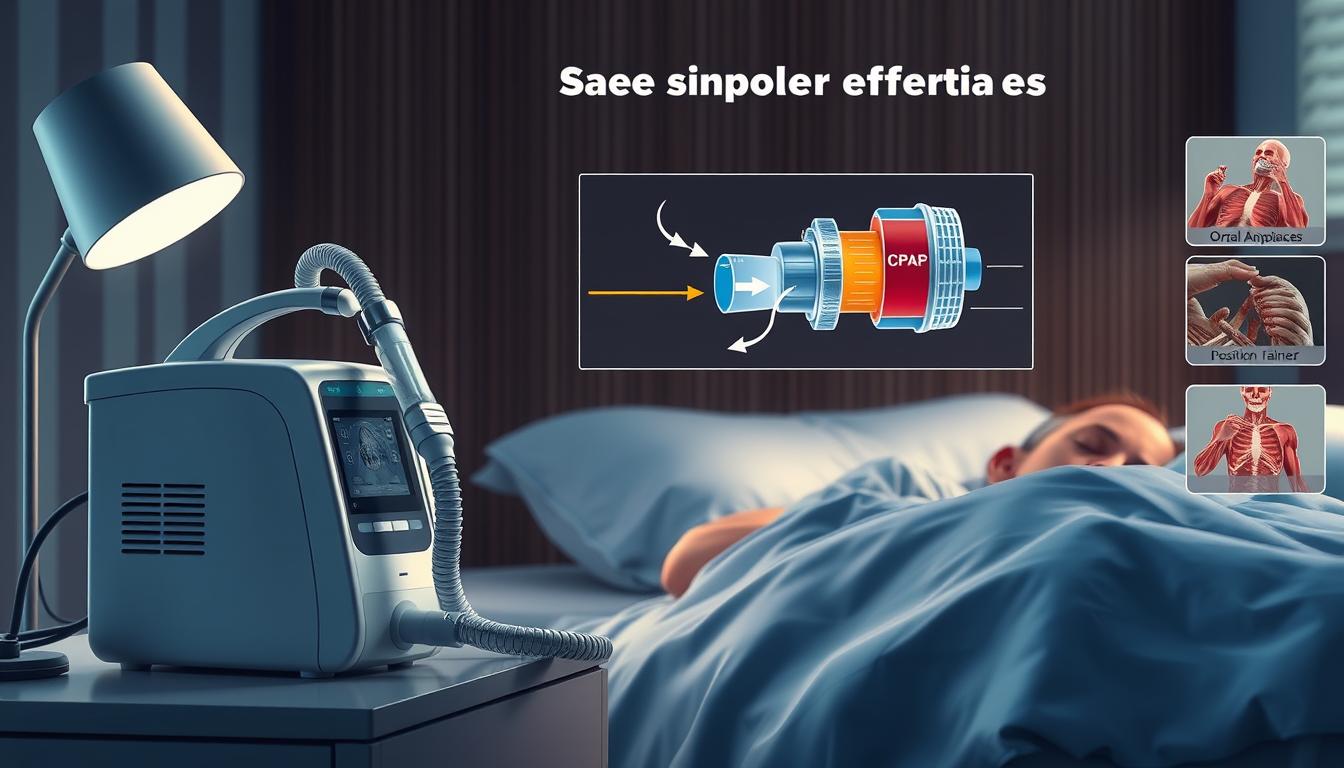Sleep apnea is a common condition that disrupts breathing during rest, often leading to serious health complications if left unaddressed. It affects millions of people, causing fatigue and other issues that impact daily life.
Fortunately, there are effective ways to manage this condition. From positive airway pressure devices to personalized therapies, treatment options are designed to provide relief and improve overall well-being. A thorough diagnosis is the first step toward finding the right solution.
Central sleep apnea, a less common form, requires specialized approaches. Whether through lifestyle changes, medical devices, or surgical interventions, managing symptoms is crucial for better health and quality of life.
This guide will explore the latest recommendations from trusted sources like the Cleveland Clinic and the American Lung Association. Discover how to navigate available treatments and take control of your health today.
Understanding Sleep Apnea: Causes, Risks, and Diagnosis
Breathing interruptions during rest can signal a deeper health issue. These pauses, often caused by blocked airways, can lead to fatigue and other complications. Recognizing the signs early is key to managing the condition effectively.
Identifying Symptoms and Warning Signs
Common symptoms include loud snoring, daytime tiredness, and observed pauses in breathing. Partners may notice these signs before the individual does. Other warning signs to watch for include:
- Morning headaches
- Difficulty concentrating
- Irritability or mood changes
Diagnostic Approaches and Medical Evaluation
Diagnosis typically involves a sleep study, which can be done at home or in a lab. These tests measure breathing patterns, oxygen levels, and other factors. A healthcare provider may also evaluate medical history and risk factors such as obesity or family history.
Early diagnosis is crucial to prevent complications like heart disease or high blood pressure. If you suspect this condition, consult a healthcare professional for a thorough evaluation.
Sleep Apnea Treatment: Exploring Effective Therapies
Effective therapies are available to address airway blockages and restore restful nights. These treatments range from non-invasive devices to surgical interventions, each designed to improve breathing and overall health.
Non-invasive methods, such as positive airway pressure (PAP) therapy, are often the first line of defense. PAP devices use gentle air pressure to keep the airway open during rest. Oral appliances, like mandibular advancement splints, also help by repositioning the jaw to prevent blockages.

For more severe cases, surgery may be considered. Procedures like uvulopalatopharyngoplasty (UPPP) remove excess tissue to widen the airway. Each treatment is tailored to the person’s specific needs, ensuring the best possible outcome.
Ongoing monitoring and information sharing with healthcare specialists are crucial. Regular check-ups help track progress and adjust therapies as needed. Studies show that effective management can reduce risks like heart disease and high blood pressure.
- PAP therapy keeps the airway open with gentle air pressure.
- Oral appliances reposition the jaw to prevent blockages.
- Surgical options widen the airway for severe cases.
Personalized approaches based on symptom severity lead to better results. Evidence-based outcomes highlight the success of these therapies in improving rest and overall health. With the right treatment, individuals can enjoy a better quality of life.
PAP Therapy: CPAP, BiPAP, and APAP Explained
Positive airway pressure (PAP) therapy is a leading solution for managing breathing disruptions during rest. These devices use gentle air pressure to keep airways open, ensuring better airflow and improved health. Among the options available, CPAP, BiPAP, and APAP are the most widely used.
How CPAP Helps Keep Airways Open
CPAP, or continuous positive airway pressure, is the most common and effective treatment. It delivers a steady stream of air through a mask, preventing airway blockages. This consistent pressure ensures uninterrupted breathing, reducing symptoms like fatigue and morning headaches.
Many users find CPAP highly effective, but some may experience discomfort with continuous pressure. For these individuals, alternative devices like BiPAP and APAP offer tailored solutions.
Adjusting to BiPAP and APAP Devices
BiPAP, or bilevel positive airway pressure, provides two levels of air pressure—higher during inhalation and lower during exhalation. This makes it easier for users who struggle with exhaling against continuous pressure.
APAP, or automatic positive airway pressure, adjusts air pressure automatically based on the sleeper’s needs. This flexibility makes it a popular choice for those with varying breathing patterns.
- CPAP delivers continuous air pressure to keep airways open.
- BiPAP offers different pressures for inhalation and exhalation.
- APAP adjusts pressure automatically for personalized comfort.
Consistent use and proper maintenance of these devices are crucial for long-term success. Professional guidance ensures the treatment is tailored to individual needs, improving both sleep quality and overall health.
Oral Appliances and Alternative Therapy Options
For those seeking alternatives to traditional therapies, oral appliances offer a practical solution to improve airflow during rest. These devices are designed to reduce airway blockages, making them a viable option for managing breathing disruptions. Unlike continuous positive airway pressure (CPAP) machines, oral appliances are less intrusive and easier to use for many individuals.

Mandibular Advancement Splints Benefits
Mandibular advancement splints are a popular type of oral appliance. They work by gently repositioning the lower jaw forward, which helps keep the airway open. This simple yet effective mechanism reduces the risk of airway collapse during rest.
Studies show that these splints can significantly improve airflow and reduce symptoms like fatigue and morning headaches. They are particularly beneficial for individuals who find CPAP devices uncomfortable or difficult to use.
Tongue-Retaining Devices for Airway Support
Tongue-retaining devices use suction to hold the tongue in place, preventing it from blocking the airway. This method is especially useful for those whose tongue position contributes to breathing disruptions.
While these devices are less common than mandibular splints, they offer a unique solution for specific cases. Both types of oral appliances require personalized fitting to ensure comfort and effectiveness.
| Feature | Oral Appliances | PAP Therapy |
|---|---|---|
| Comfort | High | Moderate |
| Ease of Use | Easy | Requires Adjustment |
| Effectiveness | Good for Mild to Moderate Cases | Excellent for All Severity Levels |
Regular follow-ups with a sleep specialist are essential to monitor progress and make adjustments as needed. These alternative therapies can complement lifestyle changes, providing a comprehensive approach to managing the condition.
By exploring these options, individuals can find a solution that fits their needs and improves their quality of life. Always consult a healthcare professional to determine the best course of action.
Surgical Procedures: When and Why to Consider Surgery
Surgical interventions can be a viable option for severe cases when other methods fail. These procedures aim to remove or modify airway tissues, improving airflow and reducing breathing disruptions. Surgery is often considered when non-invasive treatments like PAP therapy or oral appliances don’t provide sufficient relief.
Overview of Surgical Options
Several surgical procedures are available to address airway blockages. Uvulopalatopharyngoplasty (UPPP) is a common option that removes excess tissue from the throat to widen the airway. Maxillomandibular advancement (MMA) repositions the jaw to reduce obstruction, while tongue-related surgeries focus on repositioning or reducing the size of the tongue.
Clinical studies show that these procedures can significantly improve airflow and reduce symptoms. However, surgery is not without risks. Potential complications include pain, swelling, and changes in voice or swallowing. Choosing an experienced surgeon is crucial to minimize these risks and ensure the best possible outcome.
| Procedure | Focus Area | Effectiveness |
|---|---|---|
| UPPP | Throat | High |
| MMA | Jaw | Moderate to High |
| Tongue Surgery | Tongue | Moderate |
Ongoing monitoring post-surgery is essential to track progress and address any complications. Surgical options are typically part of a comprehensive, personalized plan tailored to the individual’s needs. With the right approach, surgery can provide long-term relief and improve quality of life.
Lifestyle Changes and Home Remedies for Better Sleep
Making small adjustments to daily habits can significantly improve breathing patterns and overall well-being. These changes, when combined with medical treatments, offer a comprehensive approach to managing symptoms effectively. Leading health organizations like the Cleveland Clinic and the American Lung Association emphasize the importance of diet, exercise, and positional therapy as key components of a healthy lifestyle.
Diet and Weight Management
Diet plays a crucial role in managing symptoms. Research shows that maintaining a healthy weight can reduce airway blockages and improve airflow. Focus on a balanced diet rich in fruits, vegetables, lean proteins, and whole grains. Avoiding heavy meals, caffeine, and alcohol before bedtime can also enhance rest quality.
Exercise for Stronger Muscles
Regular physical activity strengthens the muscles involved in breathing, reducing the risk of airway collapse. Activities like walking, swimming, or yoga can improve overall fitness and promote better airflow. Even moderate exercise, when done consistently, can make a significant difference.
Positional Therapy for Airway Patency
Sleeping position can impact airflow. Positional therapy involves avoiding back sleeping, which can cause the tongue and soft tissues to block the airway. Using specialized pillows or devices to encourage side sleeping can help maintain an open airway throughout the night.
These lifestyle changes, when combined with device-based therapies like CPAP or oral appliances, provide a well-rounded approach to symptom management. Consistency is key, and gradual adjustments often yield the best long-term results. Always consult a healthcare provider to tailor these strategies to your specific needs.
Innovations in Sleep Apnea Management and Treatment
Recent advancements in medical technology are transforming how we manage breathing disruptions during rest. From new drug therapies to cutting-edge nerve stimulation techniques, these innovations are providing more options for individuals seeking relief. These breakthroughs not only improve effectiveness but also reduce complications associated with traditional methods.
New Drug Therapies and Recent Approvals
FDA-approved medications like Zepbound are changing the way we approach airway management. These drugs focus on weight loss, which can significantly reduce airway blockages. Clinical studies show that patients using these therapies experience fewer complications and improved airflow over time.
Another promising option is medications that target the muscles in the mouth and throat. These drugs help maintain airway patency, especially during rest. Hour-based data from trials highlights their efficacy in reducing breathing disruptions.
Nerve Stimulation Techniques Explained
Nerve stimulation is a groundbreaking approach to managing airway blockages. Hypoglossal nerve stimulation, for example, uses a small implant to keep the airway open. This method is particularly effective for individuals who cannot tolerate continuous positive airway pressure devices.
Phrenic nerve stimulation is another innovative technique. It targets the diaphragm to improve breathing patterns. Both methods have shown significant success in clinical trials, offering long-term relief with minimal complications.
| Technique | Target Area | Effectiveness |
|---|---|---|
| Hypoglossal Nerve Stimulation | Mouth and Throat | High |
| Phrenic Nerve Stimulation | Diaphragm | Moderate to High |
Technological advancements in appliances are also making a difference. Modern devices are more comfortable and easier to use, ensuring better compliance. These innovations are reshaping treatment protocols, offering personalized solutions for every individual.
With these new options, patients can now choose therapies that best fit their needs. Always consult a healthcare professional to explore these innovative treatments and find the right solution for you.
Long-Term Success Strategies and Follow-Up Care
Managing breathing disruptions effectively requires a long-term plan and consistent follow-up care. Regular visits to a sleep specialist are essential to monitor progress and make necessary adjustments. These check-ups ensure that prescribed devices, like CPAP machines, are working optimally and providing sustained relief.
Consistent use of these devices is key to maintaining an open upper airway. Proper maintenance, such as cleaning masks and replacing filters, ensures their effectiveness. Data collected from these devices during follow-up consultations helps specialists tailor treatment plans to evolving needs.

Lifestyle changes play a crucial role in long-term success. Monitoring weight, quitting smoking, and staying active can significantly improve airflow and overall health. Medications may also be adjusted over time to address specific challenges, ensuring a comprehensive approach to symptom management.
Here are some practical tips for maintaining treatment efficacy:
- Schedule regular follow-ups with your sleep specialist.
- Clean and maintain your devices as recommended.
- Track your weight and make dietary changes if needed.
- Avoid smoking and limit alcohol consumption.
- Stay informed about new advancements in care.
Ongoing patient education is vital for adherence to these strategies. By staying proactive and making necessary adjustments, you can prevent the reoccurrence of symptoms and enjoy a better quality of life. Always consult your healthcare provider to adapt your plan based on your evolving needs.
Final Thoughts on Embracing a Restful Night’s Sleep
Finding the right approach to manage breathing disruptions can transform your quality of life. Throughout this article, we’ve explored various methods, from device-based therapies to lifestyle adjustments, that can help you achieve better results. A personalized plan, tailored to your needs, is essential for effective management.
Combining treatments like CPAP or oral appliances with healthy habits, such as maintaining a good sleeping position and staying active, often yields the best outcomes. Staying proactive with follow-up care ensures your plan remains effective over time. Proper management not only reduces risks but also improves overall health.
Remember, overcoming challenges like obstructive sleep apnea is achievable with commitment and expert guidance. If you’re ready to take the next step, consult a healthcare professional for tailored advice. With the right support, you can embrace a healthier, more restful future.

